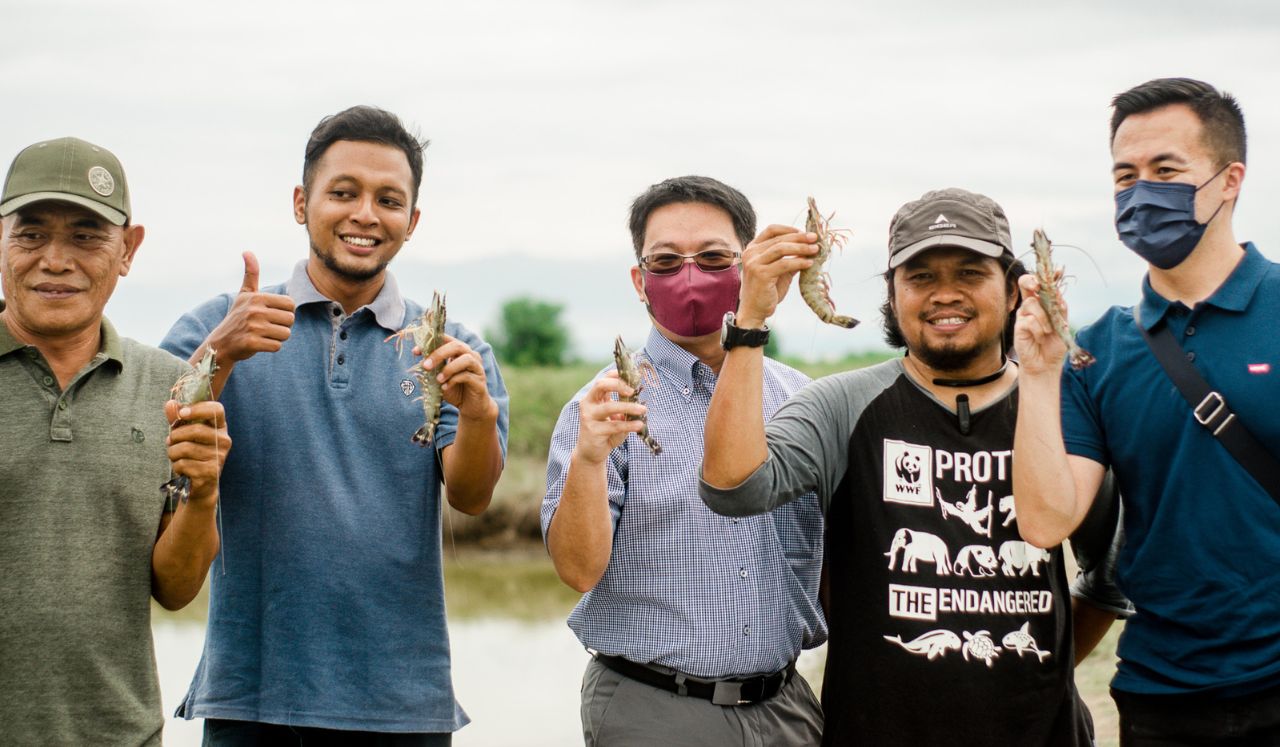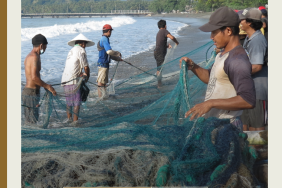TO REVIVE TIGER SHRIMP GLORY, A NUMBER OF FARMERS IN BREBES BECOME MODELS OF GOOD SHRIMP FARMING
A number of farmers are pioneering the Demo Pond program to revive the popularity of tiger shrimp in Brebes Regency. The program was promoted by WWF-Indonesia and Seafood Savers member, PT Misaja Mitra, and assisted by the Center for Brackish Water Aquaculture-Ministry of Marine Affairs and Fisheries (BBPBAP-KKP) Jepara, Central Java. The sampling results of tiger shrimp cultured with good aquaculture practices for 104 days showed that the shrimp reached the desired market size of 35-40 fish per kilogram.
The tiger shrimp commodity is native to Indonesia and was once the country's flagship shrimp commodity. Tiger shrimp are also still sought after in the market, especially in the export market. Now, its popularity has been displaced by other shrimp species among Brebes Regency farmers because tiger shrimp are considered less profitable and less productive. There are various factors that contribute to the low productivity of tiger shrimp, including inadequate pond preparation and management, declining water and soil quality for farming, and low quality and quantity of seeds.
In order to increase the popularity of tiger shrimp among farmers, WWF-Indonesia together with PT Misaja Mitra and BBPBAP-KKP Jepara assisted 10 hectares of tiger shrimp ponds as a pilot in Brebes Regency. Selected farmers then participated in the Farmer Field School to learn and strengthen their knowledge of good farming practices standards and procedures. Now, they conduct demonstrations of good tiger shrimp farming in the Demo Pond program. Some of the practices include draining ponds without chemicals, using disease-free quality seeds with clear origins, and using natural ingredients to increase natural feed for shrimp.
"The latest sampling results showed that tiger shrimp reached an average size of 28.57 grams per head. That's already in the 35-40 size range. It is hoped that good aquaculture practices can also minimize the impact of aquaculture on the environment, such as the decline of tiger shrimp stocks in nature. So far, seeds are produced from natural broodstock, so we need to increase the productivity of tiger shrimp farming so that the use of seeds becomes efficient," said Dandy Eko Prasetiyo from WWF-Indonesia.
The Demo Pond program is expected to provide an example of a good tiger shrimp harvest so as to increase public interest in re-popularizing tiger shrimp farming. The application of good aquaculture practices can increase optimal tiger shrimp productivity.
"We are targeting an increase in survival rate and yield, so that the market demand for tiger shrimp can be met. It is expected that environmentally friendly tiger shrimp production can attract export companies to buy commodities native to Brebes," said Budhi from PT Misaja Mitra.





